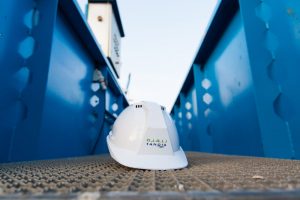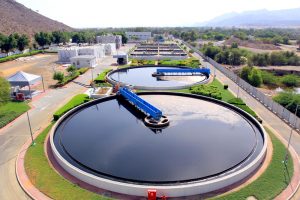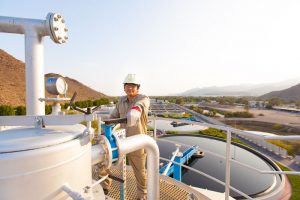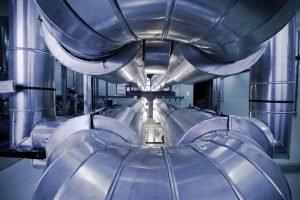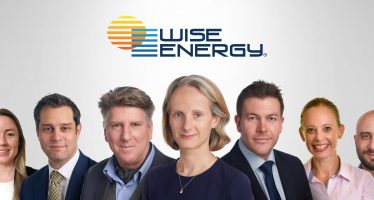Water in the Desert: A Challenge that TANQIA has Taken to Heart
TANQIA, the UAE’s first privately owned wastewater collection and treatment utility, does not lack vision.
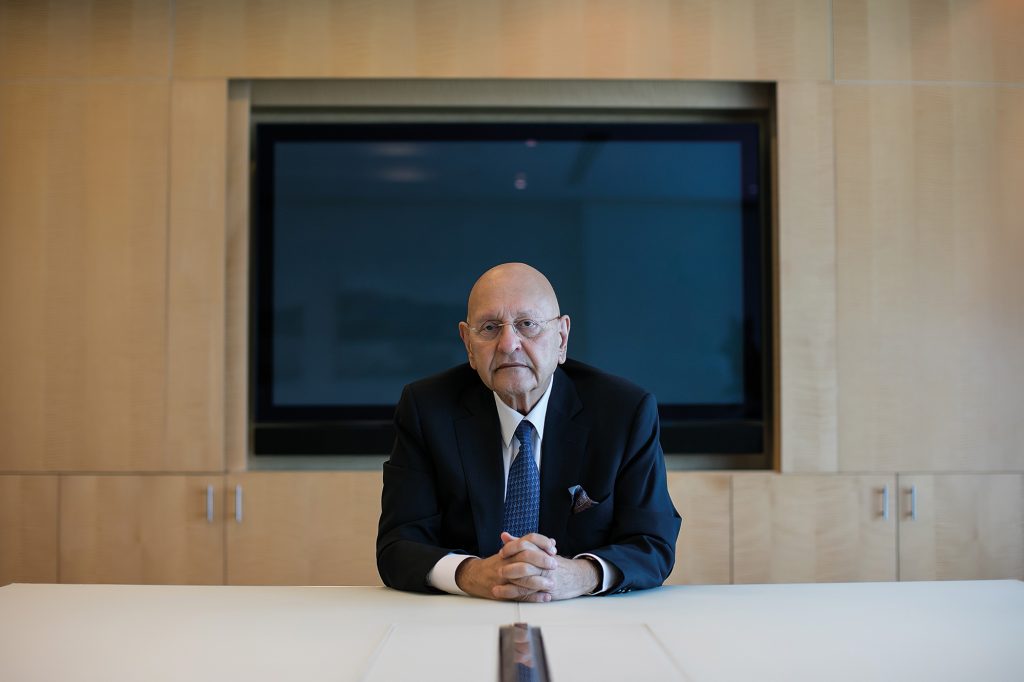
Executive Chairman: Ibrahim Elwan
The state-of-the-art wastewater collection and treatment system (WWCTS) in Fujairah strives to drive down costs, promote sustainability, and accommodate future demand with renewable energy.
Water supply across the Gulf Region depends on two sources: seawater, through desalination, and underground aquifers. Ground water declines and salinity is rising due to over-pumping and seawater ingress. The UAE’s supply relies predominately on desalination and the recharging of underground wells.
Recent UAE government policy calls for maximising recycled wastewater to substitute higher-value desalinated and underground water. TANQIA is a regulated utility, developed by the Elwan Group, with the mandate to design, finance, construct, operate, maintain, and expand the WWCTS to meet forecast demand.
The greenfield wastewater system was implemented in two phases. Construction commenced in 2005 commercial operation began in 2009. Phases I and II comprise two trains of 8,000 m3/day (2 x 8,000 m3/day) and 179 km of wastewater collection network (WWCN) with 29 pumping stations.
Since TANQIA began operations in 2009 at a 16-hectare site south of Qidfaa, north of Fujairah’s capital, the utility has blazed a trail as the Middle East’s first privately held WWCT utility. It has set industry benchmarks to drive down the cost of wastewater services and expand its treatment capacities.
Highest Quality, Lowest Cost
Demand forecast for wastewater services in the 92 square kilometre concession area guides the utility’s investment strategy. Population growth projections predict average annual growth of 5.2 percent for the duration of the concession period. The actual rate of population growth has accelerated to about eight percent. There was also a sustained rise in per-capita water consumption, from 174 litres in 2002 to 379 litres in 2021.
TANQIA’s strategy is to gradually increase tariffs to meet operational and maintenance costs. The utility is an environmentally conscious firm whose emphasis is to extract valuable resources for “economic recycling” — an important element in cost reduction — with the smallest environmental footprint possible.
Strategy Targets Achieved
When GoF and TANQIA executed the concession area, the WWCN covered just 179 km; the network has since expanded to 546 km. The service-coverage ratio had increased to 87 percent of the population in the concession area by 2021. The remaining 13 percent remains unconnected because of government plans to use the area for a commercial city centre. Wastewater generated continues to be evacuated by Fujairah municipality for treatment. This strategy was implemented with the support of the government and municipality of Fujairah, and the government of Abu Dhabi
TANQIA is expanding its services to meet demand. The annual rate of population growth was forecast at five percent. Actual growth was nine percent during the execution of phases I and II, making the construction of Expansion I necessary.
TANQIA intensified its maintenance, concentrating on preventative replacement of critical components of wastewater treatment plant. As WWCN was to be financed by one-time, non-refundable connection charges for property owners, TANQIA broadened coverage to meet demand.
Revised Expansion I
TANQIA relied on Revised Expansion I investments to achieve sustainability and greater reliance on renewable energy, as well as the treatment of sludge for reuse. Phases I and II reduced the consumption of conventional energy. These measures reduced operation and maintenance costs. Sludge treatment generates revenues from surrounding industries.
The firefighting and fire alarm system of the WWTP and Revised Expansion I will be upgraded to comply with guidelines. Revised Expansion I will also entail works and fittings for the administration building, and the pipeline network to supply effluent to the Etihad Water and Electricity (EWE) distribution network through the effluent-balancing tank near the WWTP site. The balance will ensure unrestricted irrigation, in compliance with World Health Organisation standards.
The electromechanical (E&M) works in Revised Expansion I include the supply and erection of equipment for the four new trains, and the addition of two belt presses for sludge dewatering of the new Mohamed Bin Zaid (MBZ) city concession area. It will also provide a new pumping station for the balancing tank. Additional work entails the supply and erection of the polishing plant’s E&M to upgrade effluent quality.
![Graph 1: Total Annual Carbon Dioxide Savings [t/a]](https://cfi.co/wp-content/uploads/2022/05/TANQIA-1.jpg)
Graph 1: Total Annual Carbon Dioxide Savings [t/a]
Progress
Construction of Revised Expansion I is advanced, and the contract for civil and electromechanical works is 50 percent complete. Completion of Stage I is expected by the end of this year. Stage II, adding an extra 16,000 m3/day, is due for completion by July 31 next year. Revised Expansion I will increase ITC of WWTP from the 16,000 m3/d in place to 46,000 m3/d.
An Expanding Network
TANQIA’s greenfield WWTS comprised a wastewater treatment plant processing 16,000 m3/day, composed of two trains, 179 km of WWCN, and 29 pumping stations. This system provides services to 4,725 properties. The number of properties connected increased from 4,725 to 8,352 over the same period.
This represents 20,330 accounts connected to the WWCN, while the population served by TANQIA’s wastewater services increased from 37,187 to 124,300, an average annual increase of eight percent.
Peak wastewater generation for treatment reached 27,000 m3/d, despite the fact that the ITC had been at 16,000 m3/day since 2009 — and the deficit will persist until Revised Expansion I is completed. Analysis of water consumption data in the concession area shows that peak volume of wastewater generation increased at an average annual rate of 9.7 percent for 2002–2021, at about 27,000 m3/day in December 2021.
The unprecedented growth in water consumption and generation of wastewater requires urgent investment to increase the ITC of the WWTP, coupled with systematic and gradual adjustment in water and wastewater tariffs to encourage conservation and the introduction of water-saving devices.
TANQIA-SIYANA — a company fully-owned by the Elwan Group — operates the WWCTS, and has managed to maintain the increase in inflow of 27,000 m3/d through its intensive maintenance and replacement programme for the existing ITC of 16,000 m3/d. Shortage of ITC reduces the chances of generating effluent at the standards agreed upon under the concession agreement.
Integration and Circularity
The network connection will be created to provide wastewater services to Stage I of the new MBZ city, adding another 46.5km to completed internal WWCN. Construction of the pipeline network and MBZ pump station was completed in December 2018. The hydraulic, cost-effective strategy for connecting the city to TANQIA’s network required two pipelines, each 400mm in diameter and 11.25km in length.
TANQIA will provide 1.3 billion gallons of high-quality effluent for EWE, once the distribution network is completed. TANQIA makes a significant environmental contribution, substituting high-quality effluent for desalinated and underground water. Revised Expansion I of the WWCT System will produce tertiary treated effluent, suitable for restricted irrigation and industrial uses. For unrestricted irrigation and special industrial uses, the effluent will have to be further treated.
EWE’s effluent balance tank will include a distribution network to deliver water to MBZ city and farms in the northern area of the emirate. TANQIA insisted on having a polishing plant to make the effluent suitable for unrestricted irrigation. This decision was made by TANQIA following the recommendations and standards of the WHO, and supportive data on the experience of California regarding unrestricted irrigation.
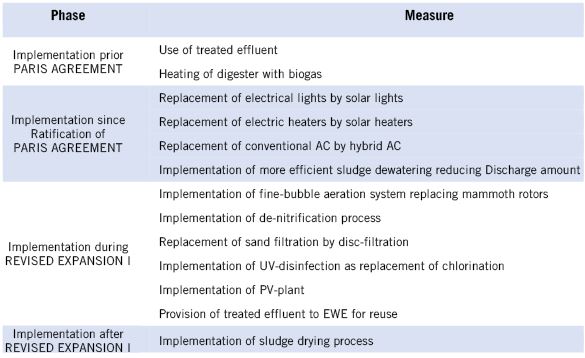
Table 1
TANQIA Green Energy Projects
TANQIA explored several energy-efficient and green energy projects in conjunction with Revised Expansion I to boost sustainability and provide energy- and cost-saving opportunities.
TANQIA believes that utility-led innovation is key to enabling an era of sustainable wastewater. To foster a culture of innovation, TANQIA is articulating new values, investing in new processes, and seeking broad stakeholder engagement. The solar energy project about to be implemented in Fujairah is an example of its movement towards sustainability.
Solar Energy
TANQIA’s solar initiative is comprised of two stages. Stage 1 is a 422kWp rooftop solar PV system that is expected to cover more than 56 percent of annual building energy requirements. Stage 2 is a 6.17 MWp solar farm that is expected to cover 107 percent of average annual energy requirements of WWTP in its entirety. In other words, it covers 30 percent of WWTP’s energy requirements during the sunshine period, and allows for the generation of revenues by exchanging cheap power from the remaining 70 percent to other industries during off-peak periods.
Work on Stage 1 is expected to start by Q4 this year, and work on Stage 2 by Q2 2023. Once completed, the new additions are expected to deliver gains by reducing operational cost. TANQIA’s green energy project will reduce the carbon footprint by about 6,061 tonnes of CO2 each year. Such a reduction in greenhouse gases is equivalent to that of 1,543 cars driven for a full year, or those generated annually by the electricity consumption of 1,209 homes. This is a reduction in carbon footprint of 224,791 tonnes of carbon dioxide over 32 years — until 2052, the end of the concession period.
TANQIA’s dedication to the environment continues with the installation of the PV solar farm with a generating capacity of 24.7 MW. Electricity demand escalates in tandem with wastewater generation. The utility maintains its commitment to being environmentally friendly in all its operations, helping to fulfil the UAE’s obligations under the Paris Accord.
Treatment of Digested Sludge
The government of Fujairah agreed to dispose of sludge generated by the treatment process at designated landfill sites. Recently, however, an initiative by the UAE Minister of Infrastructure and Petroleum, his excellency Sohail Bin Mohamed Al Mazroui, called for sludge to be reused as fertilizer or as a substitute for fossil fuels in combustion processes.
Both disposal paths require further sludge treatment, involving a final drying process. Available technologies are being reviewed in terms of cost-benefit.
A further option would be sludge incineration, which would addresses the issue of trace substances of emerging concern (TSECs) — micropollutants such as heavy metals, microplastics, pharmaceuticals, and hormones. Dried sludge could be sold to cement and steel factories as a source of energy, substituting for fossil fuel sources.
UAE’s Commitment to the Paris Accord
TANQIA identified measures to reduce its environmental and carbon footprint well before ratification of the Paris Accord. Graph I provides an overview of the carbon dioxide savings already implemented, or scheduled for implementation.
Thirteen measures were identified for the reduction of CO2 emissions, some of them successfully implemented prior to ratification of the Paris Agreement. Others were implemented after ratification, and contribute to emission reductions.
By the end of 2020, a total of 52,879 tonnes of carbon dioxide had been saved. Measures identified as having the most important impact on TANQIA’s climate protection efforts are part of Revised Expansion I. By the end of 2052, 1.56 million tonnes of CO2 will have been saved.
TANQIA: A Polished Approach
TANQIA explores and pursues projects beyond the UAE’s borders. The conditions that TANQIA has insisted on is testament to the firm’s continued emphasis on quality, efficiency, and sustainability. This revolves around protection of the environment through pursual of least-cost as a priority, including efforts on a number of sustainability initiatives.
In projects across the Middle East and the Mediterranean countries of the EU, TANQIA has insisted that no effluent would be discharged into deserts, rivers, lakes and seas unless it had been treated up to the tertiary stage, and that it would be polished.
The polishing process targets viruses, bacteria, and parasites, and involves the removal of suspended solids, biological oxygen demand and other traces of pollutants that may be left after secondary treatment.
TANQIA’s principled approach provides opportunities for reuse of the polished effluent for economic purposes. The major impediment to Gulf Region countries achieving this goal is the price of water and wastewater services. Wastewater tariffs, as set by most Middle Eastern governments, are subsidised. There is scope for the economic reuse of polished tertiary treated effluent that complies with the most stringent standards.
TANQIA has been working on a solution that reduces the cost of polishing effluent, and the cost of treatment. This will require more data collection, examining the quality of output and energy use per gallon of water, to determine the commercial potential.
You may have an interest in also reading…
WiseEnergy: Weathering Pandemic Storms a Result of Strong Culture and a Commitment to Clients and Mission
The Covid-19 pandemic has taken the world into uncharted waters. The ability to adapt to challenges solve problems can make
Azerbaijan FDI
Azerbaijan is a country with wide range of investment opportunities and is undoubtedly one of the most attractive destinations for
Herald Land: UK Prime Real Estate
Established in 2009, Herald Land Real Estate Brokers caters to clients in the Middle East and around the globe. The
















































































